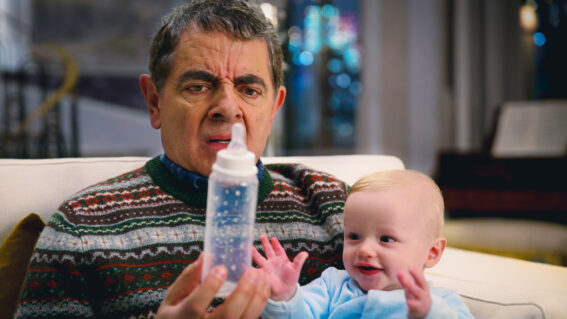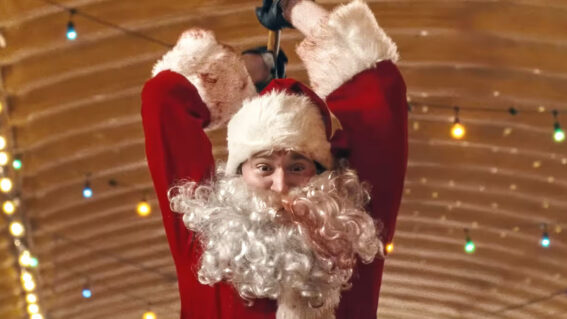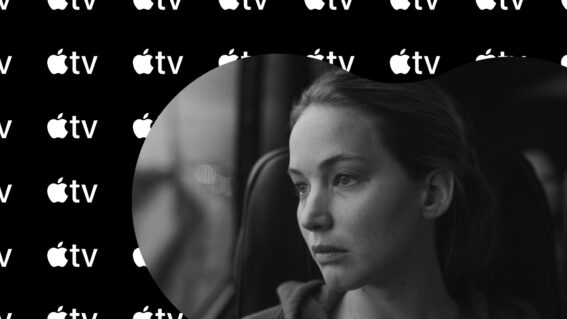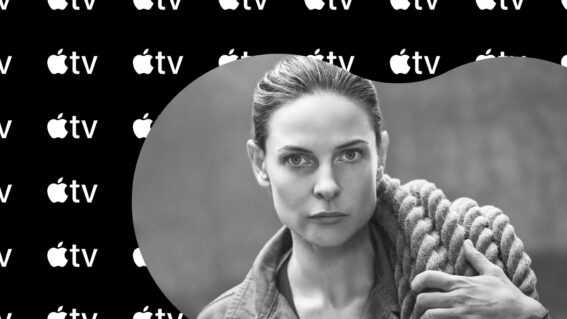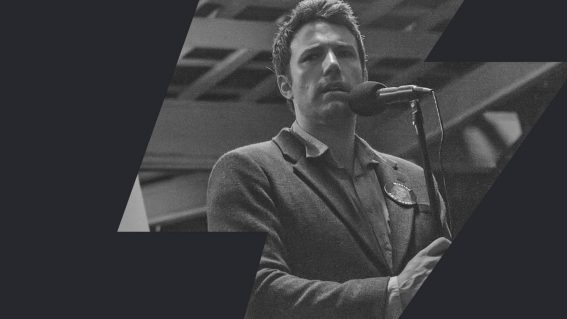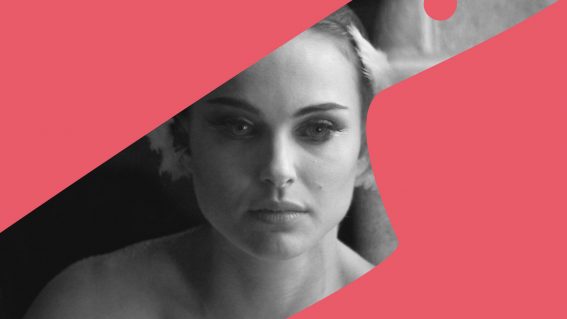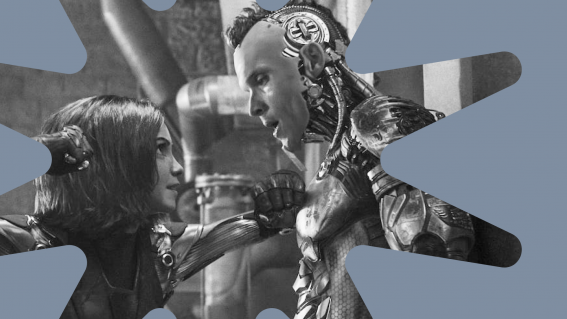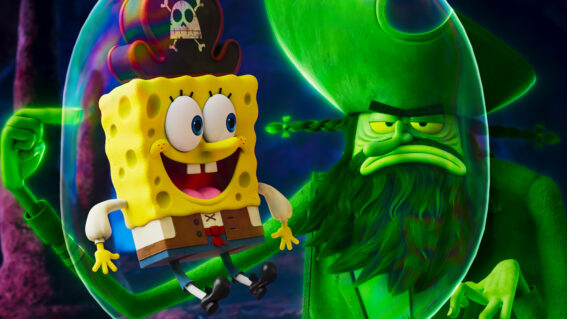The other gimmick that could have made Netflix’s Kaleidoscope a great heist series
Here’s how Netflix’s gimmicky series could have been a truly great heist story.
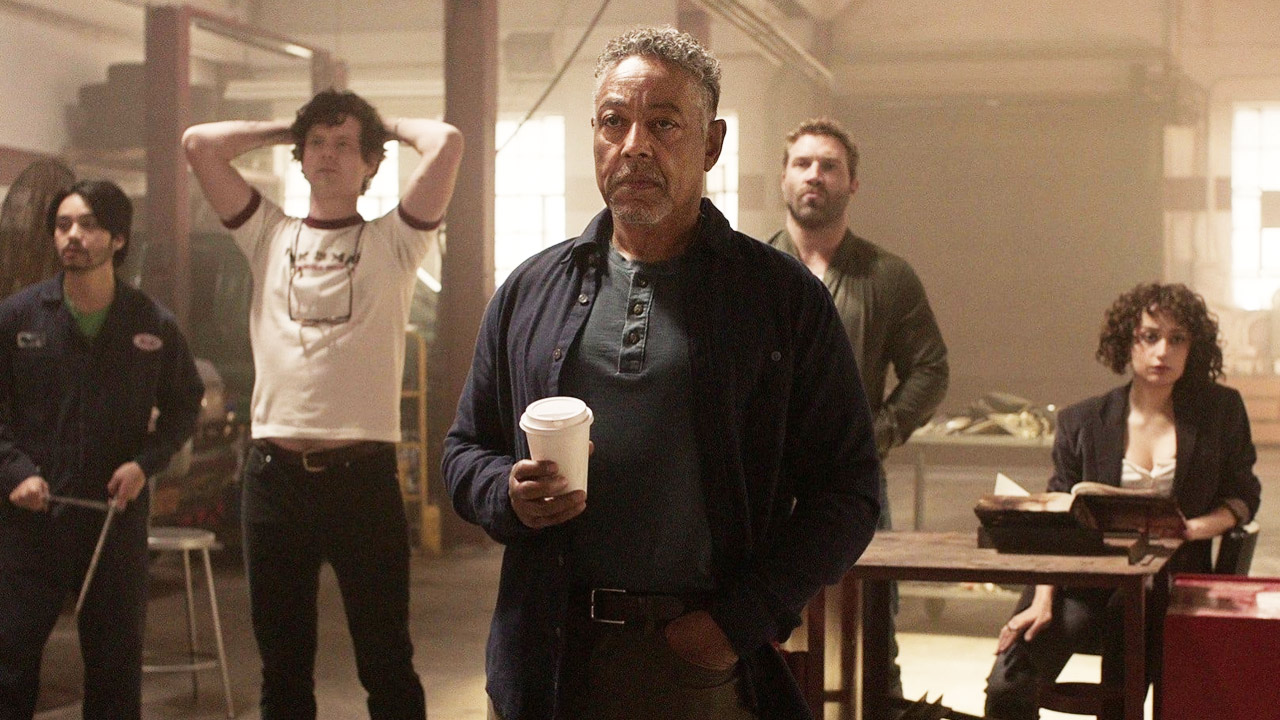
Everybody’s talking about the time-shuffling gimmick in Kaleidoscope, which involves Netflix playing episodes in a random order. Nobody’s talking about the show’s other interesting gimmick, writes Luke Buckmaster.
Commentary around Netflix’s new heist series has understandably focused on its core gimmick: that every episode other than the last are played randomly, each viewer experiencing a different trajectory. Beholden to this novelty, creator Eric Garcia and his writers understand that conventional storytelling sequencing isn’t an option and embrace a non-linear structure, dividing the narrative into eight timelines—all bar two occurring before the heist. “Kaleidoscope” is the chosen metaphor, but one could think of it as a prism: with the heist (depicted in the finale) at the centre and each window of time a side or parallelogram.
The irony is that this unorthodox approach is countered by déjà vu-evoking storytelling reliant on broad writing, tropes and familiar characters. The most stereotypical are Giancarlo Esposito’s Leo, the matter-of-fact mastermind and ice cool ringleader; Jai Courtney’s Bob, the safecracker and loose unit; and Jordan Mendoza’s RJ, the geeky driver possibly on the spectrum. Others, such as Rosaline Elbay’s explosives expert Judy, partly or mostly eschew stereotype, but at a cruel price: they are nondescript personalities that blend into each other.
Exposition-delivering scenes have these ragtag goons congregating in front of a floor plan-adorned whiteboard (the “Big Board” trope), listening to Leo’s plan for pulling off “the heist of the century.” Variations of this sequence are de rigueur, hardcoded into the genre. The most interesting question isn’t whether real-life robbers (such as those whose thieving of bonds worth billions loosely inspired the show) use whiteboards themselves, but how many have used them because they saw it in the movies.
The “Big Board” moments remind us that, irrespective of its novelty factor, Kaleidoscope isn’t really interested in envisioning a unique heist narrative—just scrambling the order of the pieces. Which is a shame, given Garcia et al had opportunity to create something invigoratingly different—not just in vague terms but in relation to a specific concept the show actually deploys. Kaleidoscope features not one but two interesting gimmicks. The other one has been neglected in commentary the show because it was embraced half-heartedly, the writers missing an extra step that could have elevated the series exponentially.
This gimmick involves each episode being assigned the title of a different colour, which have varying degrees of prominence in the aesthetic. The complete episode list reads as follows: Violet (set 24 years pre-heist), Green (seven weeks pre-heist), Yellow (six weeks pre-heist), Orange (three weeks pre-heist), Blue (five days pre-heist), White (the heist), Red (the morning post-heist) and Pink (six months post-heist). My first episode was Green, which coincidentally features some of the show’s most striking use of a single colour. It begins with a close-up of Leo—who is in imprisoned at this point in time—carving the shape of a butterfly from a block of green wood.

The next scene shows Judy—who is wearing green earrings and bracelets—making green coloured, narcotic-laced lollipops, near a window lined with green plants.

Many of the prison scenes are filled with light and dark tones of green. It’s the colour of the inmates’ clothes, and the colour of aprons worn by kitchen staff.

The prisoners’ tattoos are all green. So is the signage and paint on the prison walls.

Ergo, it’s no surprise that green vegetables are on the menu…
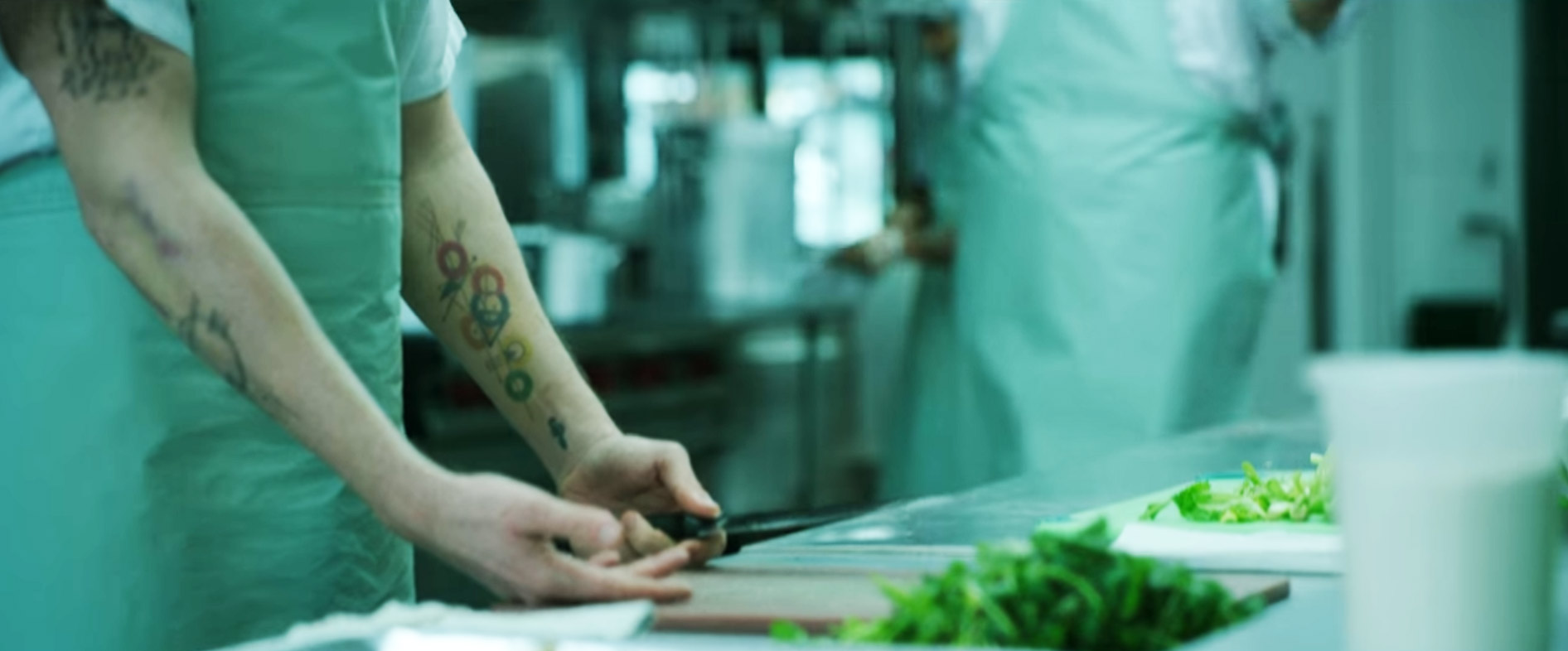
With green dominating the palette like this, you could imagine my assumption about what lay ahead: namely that the show would make a big deal of the titular colour in each episode. I soon discovered this was not the case. About 30 minutes into Green, director Robert Townsend abandons it as the dominant colour, as if waking up from a trance and proclaiming “to hell with it.” The other directors were even less committed. Props, sets, costumes etcetera deploy specific colours here and there: for instance in Violet the titular colour appears on a scarf worn by Leo’s wife, a plastic scraper handled by their daughter, in Christmas tree decorations and precious jewels.
Never, however, does this colour-themed idea really come into its own. Garcia and co don’t seem to have thought about it deeply. One could argue that lacing production and set design with use of a certain colour does nothing more than change the surface—though that doesn’t have to be the case. Colours aren’t just linked to appearances: they powerfully influence emotions and reactions, providing have opportunity for the filmmakers. In her book If It’s Purple, Someone’s Gonna Die, academic Patti Bellantoni drew on many years of studies investigating the psychological impact of colours on screens, crystallizing her findings into intriguing takeaways.
Red, for instance, “is power.” It’s “like visual caffeine” but “doesn’t come with a moral imperative.” Blue is a “detached colour” that’s “quiet and aloof.” A colour “to think to, but not to act.” Yellow is “visually aggressive” and “contrary”—often “used for caution signs” and providing “a signal for obsession.” There’s many possibilities for how this knowledge could be exploited in a heist story. Red for instance could be used to connote danger and action (the heist); blue for preparation and planning (those obligatory whiteboard scenes); yellow to signal a dramatic event soon to occur (moments leading up to the heist) and so forth. But, distracted by all that time-shuffling, the creators of Kaleidoscope missed a great opportunity to make a genuinely different heist story.







